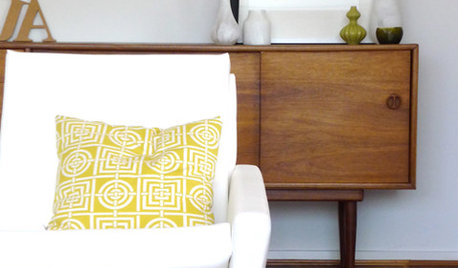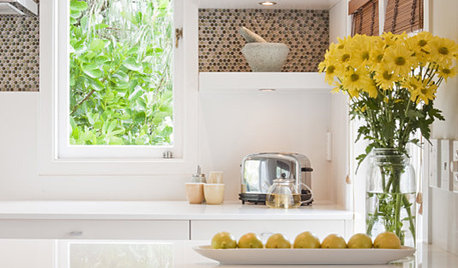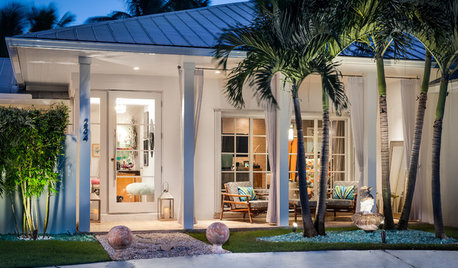citrus pot size
zippelk
13 years ago
Related Stories

GARDENING GUIDESHow to Keep Your Citrus Trees Well Fed and Healthy
Ripe for some citrus fertilizer know-how? This mini guide will help your lemon, orange and grapefruit trees flourish
Full Story
GARDENING GUIDESSpring Citrus Care Reaps Months of Sweet Rewards
Learn how to tend citrus trees in spring and ways to preserve their delicious fruit
Full Story
GARDENING AND LANDSCAPINGCitrus 101: Start Your Own Backyard Orchard
This Earth Day Weekend, Add Some Green, Style and Deliciousness to Your Landscape
Full Story
YELLOWCitrus Hues Add Zest to Rooms
You almost don't need to clean when you wash your spaces with the refreshing colors of lemons, limes and oranges
Full Story
GARDENING GUIDESGreat Design Plant: Kumquats for a Juiced-Up Winter
Grow it for the edible fruit or its good looks alone. This citrus cousin will brighten any gray winter day
Full Story
DECORATING GUIDESHave Lemons? Make a Decorative Statement
Add a splash of citrus for some midwinter color therapy
Full Story
GARDENING AND LANDSCAPINGCrazy for Fruit Trees
Whether a single citrus or a mini apple orchard, even the smallest landscape space can bear deliriously delicious fruit
Full Story
DECORATING GUIDES10 Ways to Bring Palm Beach Fun to Your Pad
Kick it up at home with palm-leaf motifs, splashes of aqua and citrus hues, and decorating touches with a little wink
Full Story
FARM YOUR YARDHow to Grow Vegetables in Containers
Get glorious vegetables and fruits on your patio with a pro’s guidance — including his personal recipe for potting mix
Full Story
FALL GARDENING5 Fall Fruits You Can Grow in Containers
Brighten your porch or patio with a potted pomegranate, kumquat, blueberry bush or another great fall fruit
Full Story





greenman28 NorCal 7b/8a
zecowsay
Related Professionals
Bridgetown Landscape Architects & Landscape Designers · Brentwood Landscape Architects & Landscape Designers · Lowell Landscape Architects & Landscape Designers · Wake Forest Landscape Contractors · Camp Verde Landscape Contractors · Concord Landscape Contractors · East Haven Landscape Contractors · Ellicott City Landscape Contractors · Leicester Landscape Contractors · Longmont Landscape Contractors · Parkland Landscape Contractors · Rio Linda Landscape Contractors · Vashon Landscape Contractors · Wallingford Landscape Contractors · Hawaiian Gardens Landscape Contractorstapla (mid-Michigan, USDA z5b-6a)
cebury
cebury